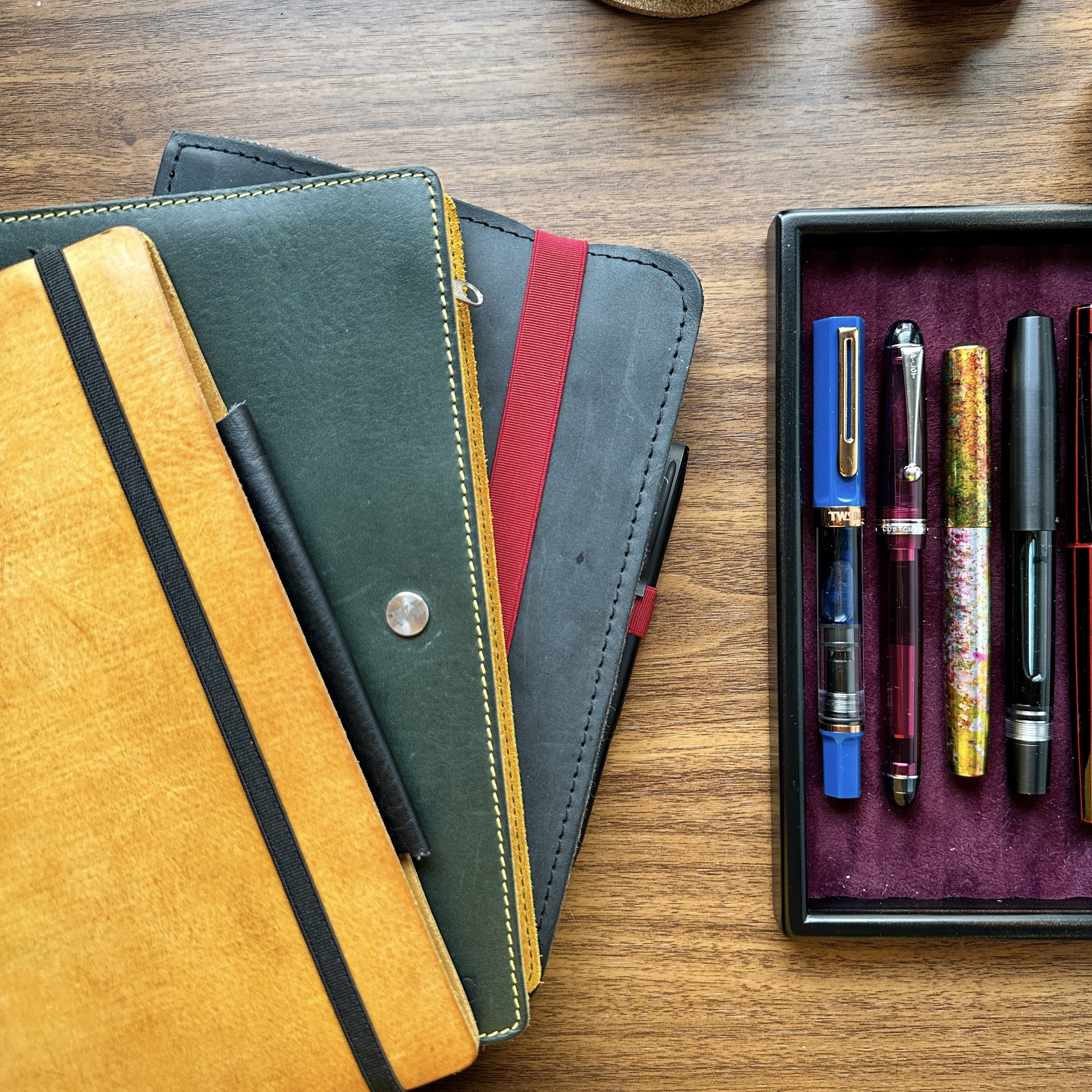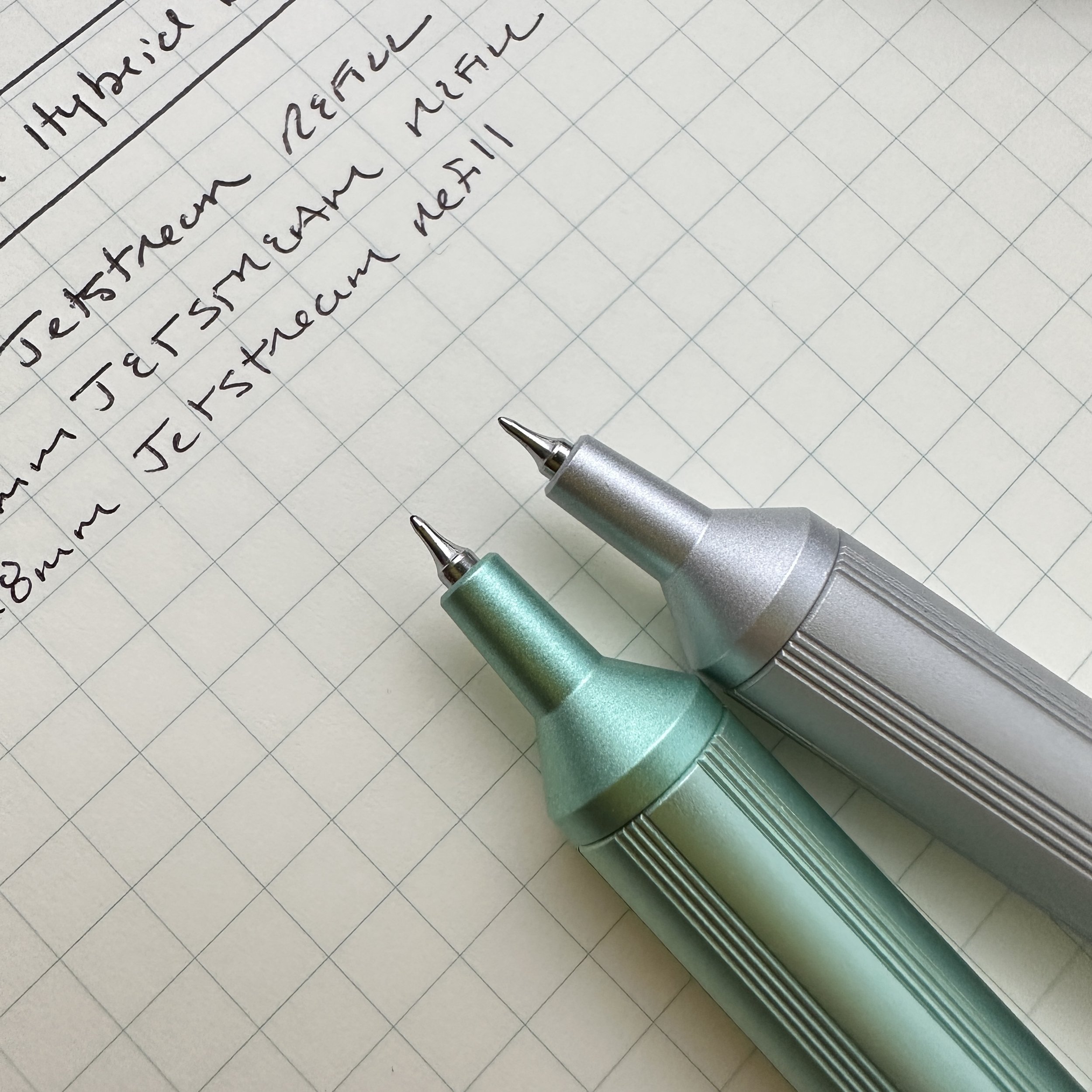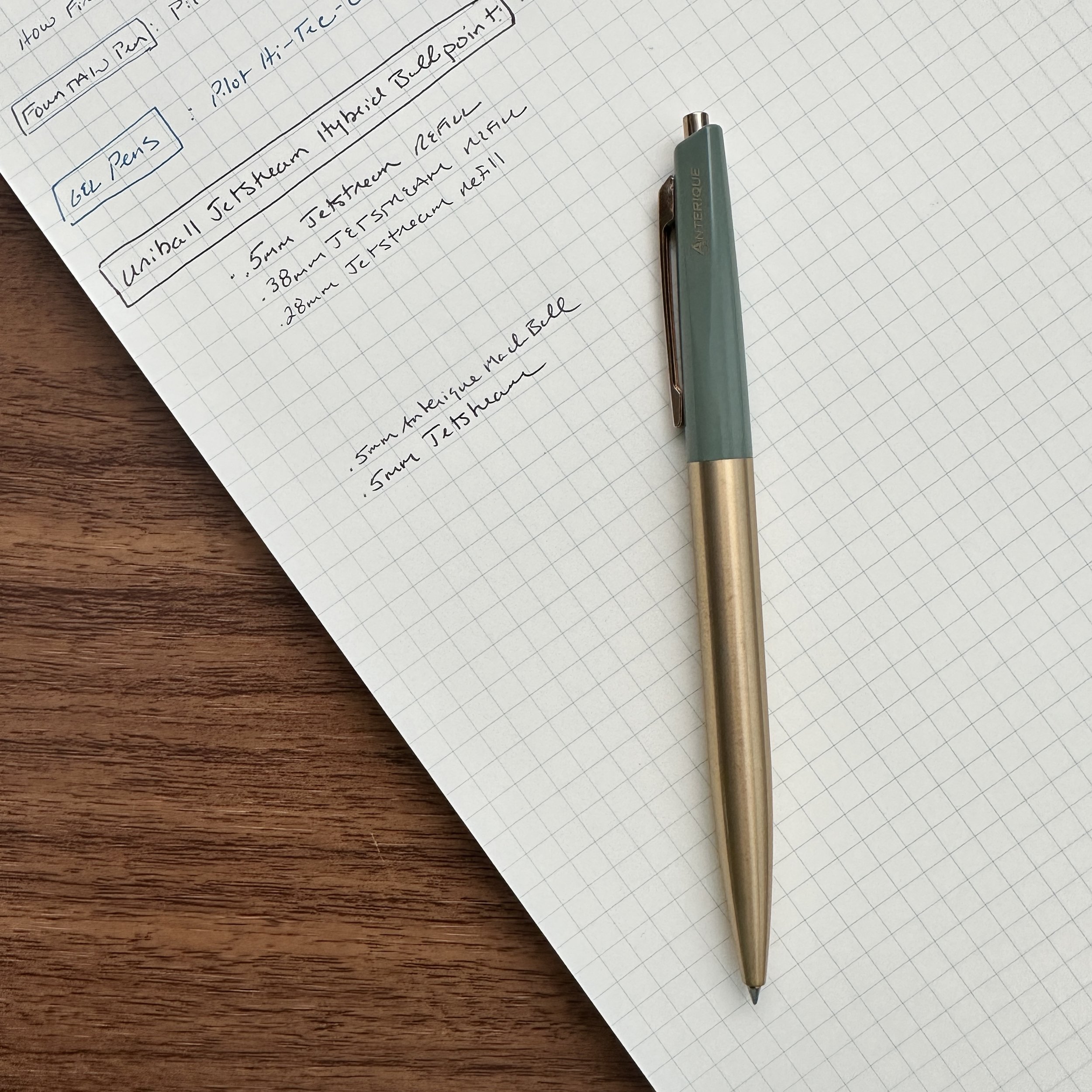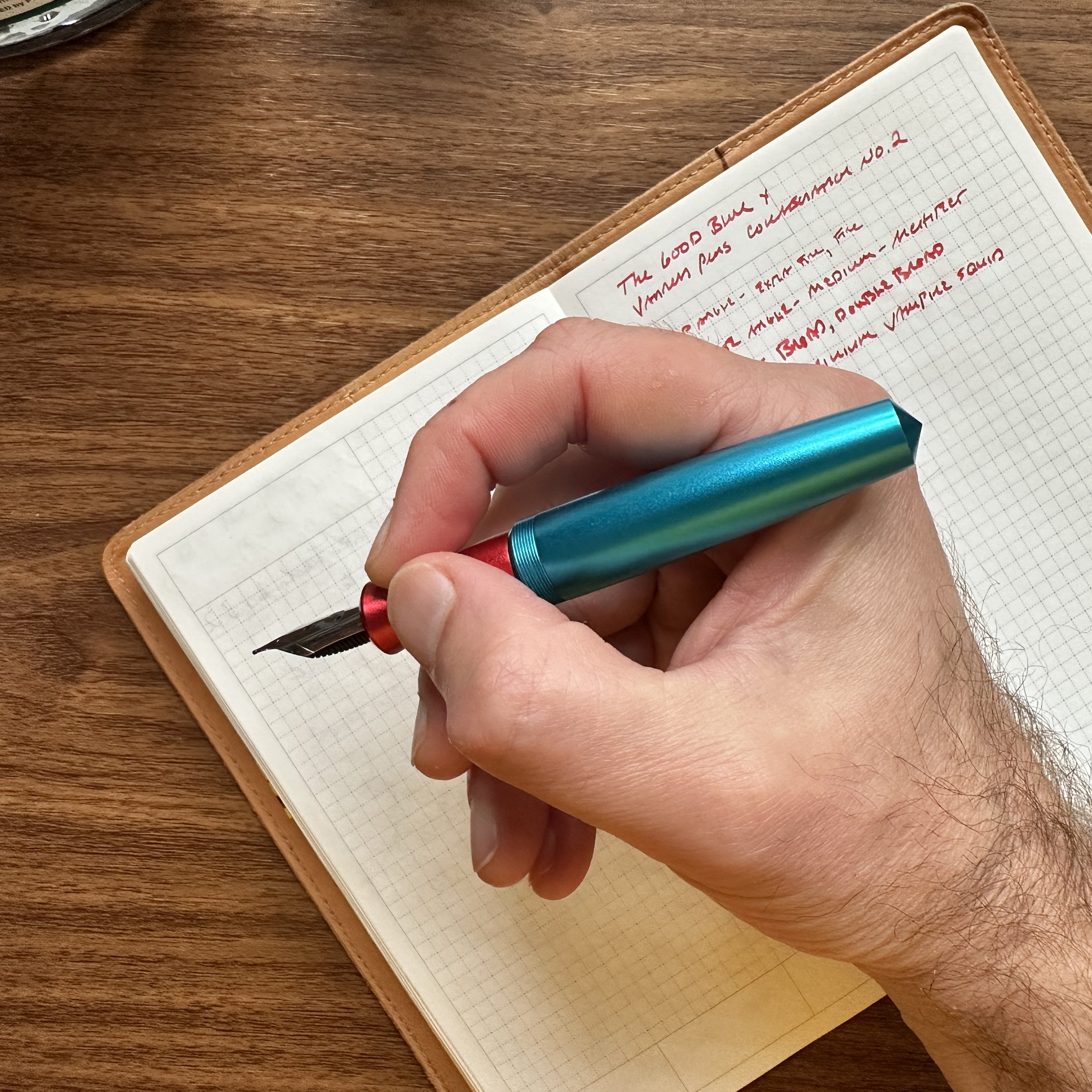Between my dual careers as an attorney and a writer/shopkeeper/administrator, I go through a lot of paper. (Seriously - people don’t believe me when I tell them that I’ve been known to write through 1-2 full converters of ink in a single day. That requires a LOT of paper.) But what paper do I use? That depends on the nature of the writing itself. Dot grid has long been my standard “everyday” paper simply because it’s so versatile, but lately I’ve rediscovered the beauty of a plain blank page. I’ve also enjoyed using the “quadrant graph” layout from Plotter/Midori Designphil. I thought it would be fun to talk specifics about each of these papers, how I use them, and in what formats.
My Most Used Paper Rulings and How/WhY I choose Each one
Dot Grid. A light, subtle dot ruling offers just enough structure for actual writing, but it can also “disappear” if you want to draw, take random notes vertically, annotate, etc. To me, dot grid paper represents the perfect compromise between structure and flexibility, and best of all, it’s readily available in pretty much any pad or notebook format you can think of (including colored paper). The three formats I use the most are the Rhodia Dot Pad, a stationery workhorse which has been in my rotation for more than a decade, the letter-sized Write Notepads Memo Pad, and anything with dot grid Tomoe River paper, preferably the 68gsm version because I think it holds up to daily use better. (Get it while you still can.) Dot grid is my default paper.
Reticle/Cross Grid. After dot grid, the next best thing for me is a reticle grid, featuring small crosses instead of dots. (Hence this ruling also being called “cross grid.”) Offering a bit more structure than a dot grid without the fully connected lines to disrupt your writing, I will opt for a reticle grid over standard graph any day. This particular paper first went mainstream back in 2014 with the release of the Field Notes “Night Sky” edition. These days, reticle grid paper can still be somewhat difficult to find - certainly harder than dot grid - but it’s becoming more common. Atelier Musubi offers it as an option in their recently released “Rasa 83” notebooks, as well as their new Spica Bond 75 pocket notebooks. Nanami Paper also continues to sell the Seven Seas “Crossfield” Tomoe River Journal.
Blank. Back at the beginning of the year, I resolved to allow myself to just enjoy using really good paper that didn’t have a set “purpose.” I wanted to play around more with pens, ink, and even paint, and blank paper makes the perfect canvas for experimentation. Moreover, because many specialty Japanese papers only come in a blank format, allowing yourself to enjoy the blank page dramatically expands your range of options. Specific papers I’ve used often include Midori MD Cotton (which sadly no longer comes in anything other than blank), Passepied, Spica Bond, and even the G. Lalo laid paper. I’ve actually come to enjoy taking notes randomly on a blank page, without any “guidelines,” especially when brainstorming.
Multi-Lined. Somewhat sadly, I find myself using lined paper less these days, though that’s more incidental than intentional. I rarely use a standard lined ruling, and when I do I will nearly always opt for Clairefontaine’s French/Seyes-ruled paper and, more recently, the Nakabayashi lined versions that were recommended to me by Ana over at the Well-Appointed Desk. That said, I expect my usage of this multi-lined paper to dramatically increase over the next year. While I’ve been hinting at this on the site (and definitely in the Patreon discussions) for a while, I feel comfortable disclosing that I’m in the middle of a career change that (1) will allow me to devote more time to T.G.S.; and (2) move to a position at my day job that is much more writing-intensive, which is the part of the work that I truly enjoy. Hopefully I’ll shift back to where I was several years ago, using Clairefontaine French-Ruled paper to draft legal briefs by hand, much to the befuddlement of my coworkers! ;)
Quadrant Graph. I’ve been using this new arrival to the lineup almost nonstop since Plotter released their special edition “Japan Blue” notebooks last month. While I don’t typically use graph paper, if I do it’s going to be micro-graph (2mm). After some initial skepticism, I’ve really come to enjoy this layout. I write small, so the micro-graph doesn’t bother me even if a standard graph ruling isn’t my favorite. What’s surprised me is the utility of having a page divided into four quadrants. I make a lot of lists, some of which are related to one another and include “sub-lists” under specific tasks, so this layout has been quite useful for project management and thinking through SWOT-style analyses. It’s also helpful to be able to separate notes on different topics into four sections on a single page. For those who find the blue Plotter paper too dark (or the micro-graph too small), Midori sells a standard A5 journal in what they call a “Grid-Block” layout.
A dot grid ruling (top - Midori Soft Color) compared against reticle grid (bottom - Musubi Pocket Notebook)
Further Reading on My Favorite Papers
Out of the three major categories of stationery (pens, inks, paper), I feel the most comfortable recommending paper, since I have extensive experience using it everyday for 30+ years in a variety of personal and professional contexts. (I can also talk about it for hours - you’ve been warned.) Paper preferences, however, are subjective, with ruling preferences differing from person to person depending not only on need but also handwriting and notetaking style. So my ruling preferences, discussed above, may not equate to yours, and that’s ok! Finding what works for you is part of the fun of this passion/hobby.
If you’d like to read further on the topic of paper and recommendations, I’ll typically direct readers to this post on Fountain Pen Friendly Paper, which has an extensive comments section that contains additional discussion among readers. At some point I will need to update the post based on certain suggestions, but there are so many brands mentioned that there’s probably no way I will get to them all!
The Plotter Quadrant Graph Paper.
The Gentleman Stationer is supported entirely by purchases from the T.G.S. Curated Shop and pledges via the T.G.S. Patreon Program. This post does not contain third-party affiliate links or paid advertising.




